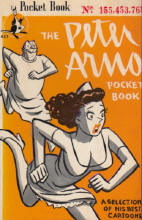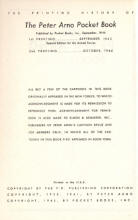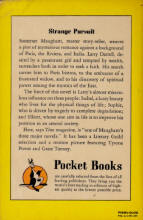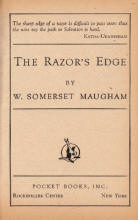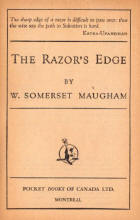|
First Printings
|
||
|
241 Readers League (nn)
268 (3rd) DJ Perma M-3074
225 ASE
225 1st printing
236 ASE
236 1st printing
251 American Red Cross
251 1st printing
268 ASE
268 1st printing
277 Canadian 1st printing US 1st printing
286 Canadian 1st printing US 2nd printing
298 Canadian 1st printing
298 US 2nd printing
no-number ASE
417 2nd printing
418 Canadian 1st and US 2nd
418 title pages
|
Pocket Books actually showed printing data in their books. That was not the case at Dell, Avon and numerous other early publishers. Of course, rather than giving them credit for this little gift to collectors, we tend to find fault with their information when some conflict exists. (Isn't that just always what happens?) I've done exactly that with several previous "Oddities" in this section of the website when they list two obviously different printings and refer to both as "firsts." On this page, however, I've noted books that documented a second "first printing" for other reasons, such as books printed exclusively for those fighting in WWII, as well as books that were first printed in Canada and THEN released in the U.S. (sometimes as another "first," and sometimes as a documented second printing.
First, a word about labels. There were several at Pocket Books over the years. Comet Books, for example, became Pocket Book Junior. Cardinal, Pocket Book's 35¢ line, often reprinted books that had already been released in the original Pocket Book run. The same with Readers League of America, which was intended for Soldiers, Sailors, Airmen and Marines during WWII, one of which is shown above. Likewise, here's a Perma book cover that reprints one of Pocket's more famous dust jackets.
But Pocket Books also printed "Armed Services Editions" under their own label. I put that in quotes because these books were NOT associated with the famous run of "Armed Services Editions" directed by The Council of Books in Wartime as part of the war effort overseas. That entire run can be seen elsewhere in BookScans HERE.
For the most part, the Pocket Book ASEs displayed no company printing data, and they were accompanied by the release of another stated first printing with the same title.
#251, The Ogden Nash Pocket Book, had a printing specifically for the American Red Cross. That relief organization was approved by the Nazi government to distribute books to American prisoners of war being held in Europe, which was in accordance with the Geneva Convention on Prisoners of War, 1929. (Here I go making assumptions again. I have seen several copies of this book, and all have been in fairly decent condition. I would not expect copies that were sent to the POW camps to remain that way; and I am assuming that the one I own, and the others I've seen, never made it overseas.)
#277 - Both the U.S. and Canadian covers are identical. Both are stated first printings.
#286 - Again, both front covers are identical, but in this case, the first issue in the U.S. was a stated 2nd printing.
#298 - Here it is again. Identical front covers. First issue in the U.S. is a stated 2nd.
Here's a weird one. The Peter Arno Pocket Book was printed in September 1945 as an unnumbered "Special Edition for the Armed Forces," and then was released a year later as #417. The first issue of 417 had a different cover illustration, and is a stated second printing.
#418 marked a shift. The front covers were identical, except that the U.S. copy had the "issue number counter" in the upper right corner. The back covers were also identical, with the exception that the "Perma-Gloss" logo was missing at the bottom of the Canadian book. Only the title pages showed the different countries of origin.
Later in the Pocket Book run, there were more and more instances of Canadian printings being the stated first issues. In the 1970s, a distinctive maple leaf was added to the covers of Canadian books.
|
|
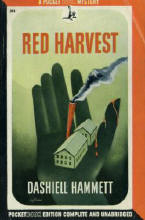

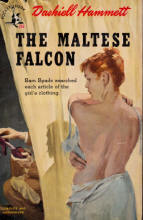
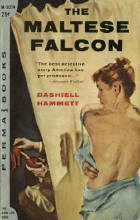
ASE_small.jpg)
ASEback_small.jpg)

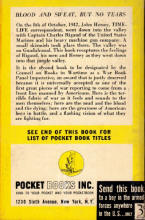
ASE_small.jpg)
ASEback_small.jpg)


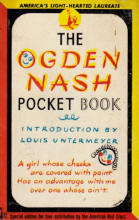
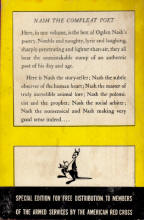

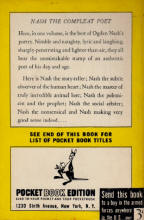
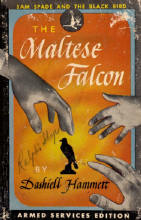

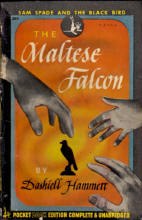
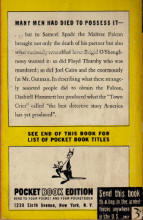
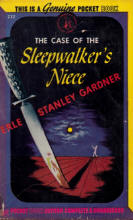
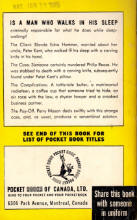








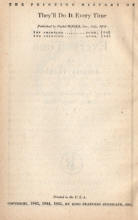
0417ASE_small.jpg)
0417back_small.jpg)
0417tv_small.jpg)
